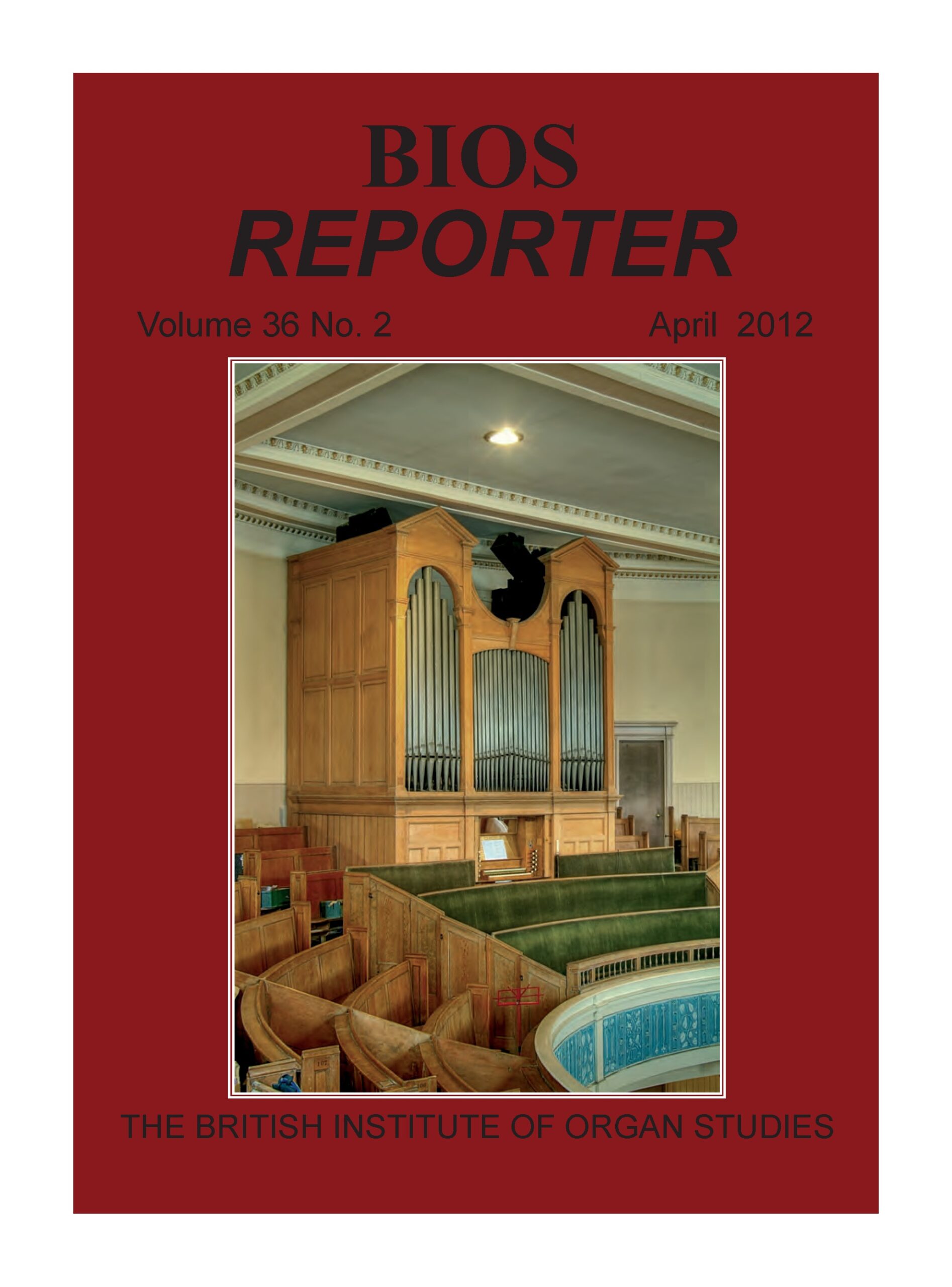Your basket is currently empty!
BIOS Reporter – Volume 36, No.2 – April 2012
The losses of historic organs in London due to bomb damage during the Second World War is a subject that has recently been covered in BIOS meetings. The seemingly random nature of this destruction is all the more striking when one considers how instruments carefully preserved over several centuries were destroyed, in some cases, in a matter of minutes. Our sense of discomfort is further increased, perhaps, when we remember that many North German organs suffered a similar fate during Allied bombing raids. The fearful symmetry of destruction during wartime is not something new. What is perhaps more insidious is the gradual loss of an organ heritage through a wilful denial of the value of a distinct national school of organ building. An influential writer on British organ history such as Cecil Clutton could say, without irony, that ‘the Victorian organ represented a high point in British organ building’. Really? Don’t get me wrong, the explosion of flue tone colours (see p. 38), the technological innovations and entrepreneurship that characterised the Victorian organ building industry were remarkable and transformed the national stock of organs from several thousand in the 1830s to the tens of thousands that now form the backbone of the National Pipe Organ Register. But, in the process, many old organs were washed away in a tidal wave of C-compass Töpfer- und Schulze-maschinen (if I dare coin such a phrase). Alongside the disappearance of ‘old’ British organs the repertoire of organ music that made use of their long compasses and distinctive sounds was soon discarded. Just as General De Gaulle is once reputed to have said – ‘it is not possible to govern a country where there are more than 400 types of cheese’ – our response to the question – ‘is (was) it desirable to standardise organs across Europe (or the world)? – should perhaps be – Non! On the fringes of Europe at least two national schools of organ building – Italy and Spain – managed to maintain their identities with perhaps more success than was managed in Britain. It can be argued that these distinctive identities were preserved at the expense of progression, in both technology and repertoire. However, just as in plants, languages and cuisines, a lack of diversity leads to mono-cultures that can lack the variety necessary to adapt to changing circumstances. In the world of organs, the piquancy of a tierce mixture is just like a ripe Camembert, not for every sandwich but rather a pleasure to be savoured from time to time…
